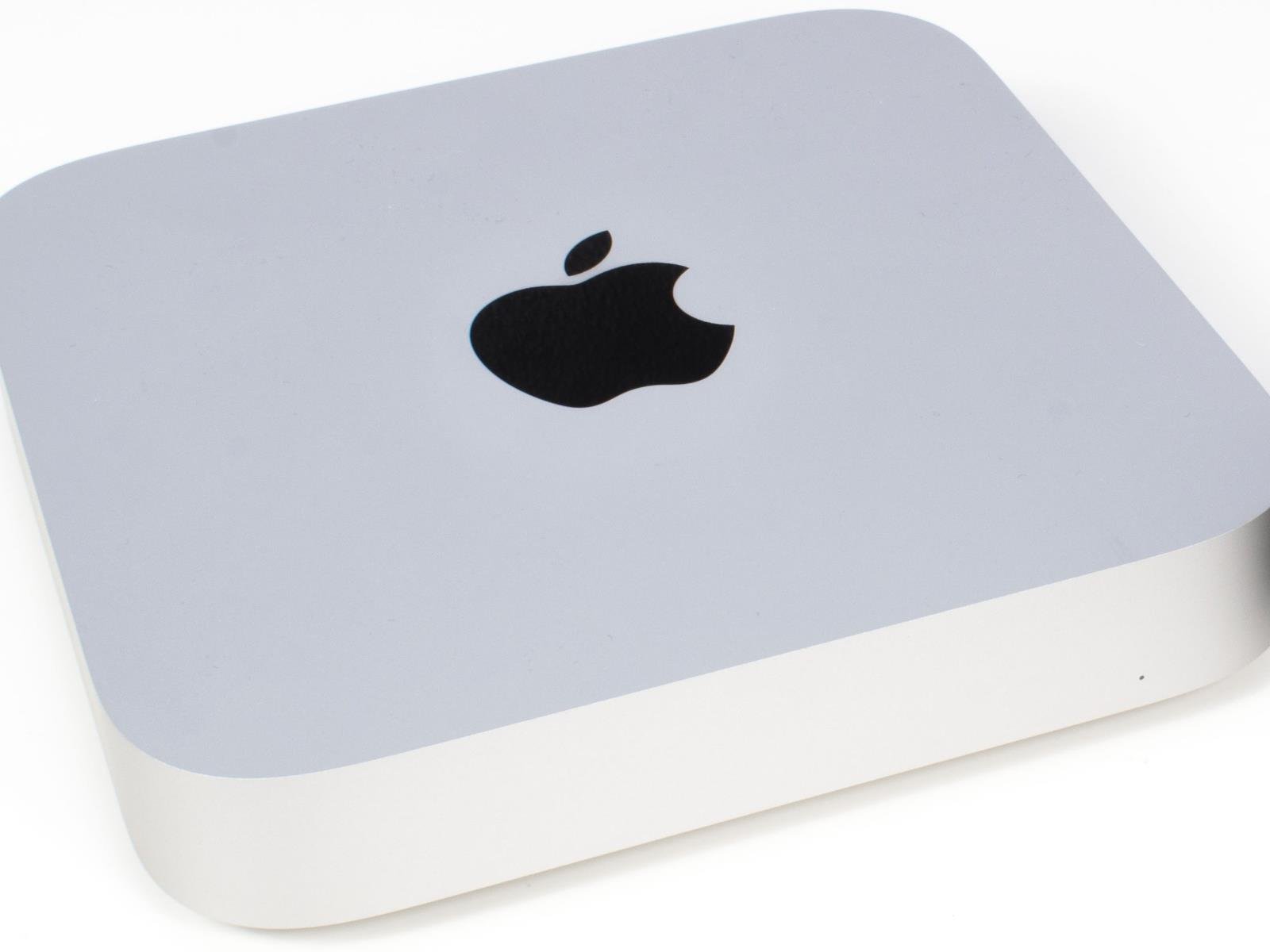- Mac Mini 2.1 Latest Os 10.8
- Mac Mini 2.1 Os X 10.8
- Mac Mini 2.1 Os X 10.9
- What Is The Latest Mac Mini Os
- Mac Mini 2.1 Osx
Here are some feedbacks about the Mac mini M1 I purchased few weeks ago, in order to compile and test GeeXLab with the new Apple Silicon M1.
The M1 Chip
Mac mini models are organized by the year they were introduced, starting with the most recent. Click the model name for detailed technical specifications. Mac mini models from 2014 and newer can run the latest version of macOS. For older models, the latest compatible operating system is noted. Here are some feedbacks about the Mac mini M1 I purchased few weeks ago, in order to compile and test GeeXLab with the new Apple Silicon M1. The M1 Chip The M1 chip is a SoC (System on a Chip) and includes a 8-core CPU, a 8-core GPU as well as other components like a neural engine, memory or input/output interfaces. If you do see 2.1.11 or 2.1.12, continue to the next step. Download the Live Update. Download the RadarOpus update 2.1.13 file by clicking on the correct link for PC (Windows) or Mac (macOS). Installing RadarOpus 2.1 Update. Back up your personal RadarOpus data (Tools - Database Management - Backup), then close RadarOpus.
The M1 chip is a SoC (System on a Chip) and includes a 8-core CPU, a 8-core GPU as well as other components like a neural engine, memory or input/output interfaces.
Apple decided to remove this feature, clicking on option/alt along with the GO from the pull down menu no longer allows you to gain access to the “LIBRARY” folder in the most latest edition of Mac OS, called, MacOS Sierra. The author of this article wrote it back in October 2016, when it did still work for the prior Mac OS, called OS X Sierra.
The M1 GPU has a FP32 performance of 2.6 TFLOPS (source). This is more or less the same performance than the Radeon RX 560 or the GeForce GTX 1650:
– GeForce GTX 1650: 2.9 TFLOPS
– Radeon RX 560: 2.6 TFLOPS
See THIS PAGE for a more complete TFLOP table.
Xcode, command line tools
The source code of GeeXLab is based on makefiles and I had no problem to compile all core libraries from the command line. I installed the latest Xcode 12.3 as well as the command line tools (because gcc/g++ are needed). By default, the compilation in command line (like gcc file.c) produces a binary for the arm64 architecture. I was surprised to see that all GeeXLab OpenGL code has been successfully compiled. OpenGL is still there in the latest macOS Big Sur!
Using Xcode 12.3, you can generate a kind of hybrid executable (Apple calls it an universal macOS binary) that packs the x86_64 and arm64 code. But in command line with gcc/g++, you have to specify the target architecture. By default on Apple M1 + Big Sur, gcc will generate an amr64 code. If you want to generate a x86_64 code you have to use the following gcc option:-target x86_64-apple-macos10.15
Example:gcc main.c -o x86_test -target x86_64-apple-macos10.15
To compile for arm64 architecture:gcc main.c -o arm_test -target arm64-apple-macos11
The arm64-apple-macos11 target is handy if you are on an Intel-based Mac mini and want to compile for ARM architecture.
Once I finished to build GeeXLab, I was impressed by its launch speed: very fast. On Linux, the launch of GeeXLab is fast but on macOS Big Sur + Apple M1, the startup is a bit faster.
This is GeeXLab compiled for arm64 architecture:
Rosetta
I compiled GeeXLab in two separate versions: GeeXLab for arm64 and GeeXLab for Intel x86_64. On the Apple M1, you can’t launch an x86_64 executable directly. You have to install Rosetta before. Fortunately, it’s easy, you are guided by macOS:
Rosetta is a translation layer that allows the Apple M1 CPU (arm64 architecture) to execute a x86_64 code developed for Intel-based Macs. The first version of Rosetta was developed for the switch from PowerPC to Intel CPUs. Rosetta 2 is the new version for the switch from Intel to Apple silicon M1 CPUs.
Rosetta works fine: here, we have GeeXLab compiled for x86_64 architecture running on Apple M1:
Here is the same GeeXLab on an Intel-based Mac mini:
Look at the framerate: 1951 FPS (M1 CPU, arm64 native code), 1282 FPS (M1 CPU, x86_64 emulated code via rosetta) and 471 FPS (Intel CPU, x86_64 native code). This statement found on the Apple M1 homepage is true:
And thanks to Metal and M1, some of the most graphically demanding apps perform better under Rosetta 2 than they did running natively on previous Mac systems with integrated graphics.
M1 GPU OpenGL Test
Let’s do another test: a shadertoy demo with a heavy pixel shader. I chose a recent demo that gives some good results: Neural Stanford Bunny 5kb.
This demo has been ported to GeeXLab and is available in the shadertoy demopack in the following folder:
geexlab-demopack-shadertoy/gl-32-shadertoy-02/neural-stanford-bunny-5-kb/
Resolution of the demo: 800×480
Some framerates:
– GeForce RTX 2070 on Windows 10: 720 FPS
– Apple M1 Mac mini (arm64 native code): 245 FPS
– Apple M1 Mac mini (x86_64 via rosetta): 220 FPS
– GeForce GTX 750 on Windows 10: 176 FPS
Let’s look at the theoretical FP32 performance of these GPUs:
– GeForce RTX 2070: 7.4 TFLOPS
– Apple M1: 2.6 TFLOPS
– GeForce GTX 750: 1.1 FLOPS
Results sound coherent. This shadertoy test shows us that the M1 GPU is not a toy.
GeeXLab for arm64 can be downloaded from this link.
GeeXLab for x86_64 can be downloaded from this link.
Activity Monitor
macOS Big Sur has a way to know for what architecture a program has been compiled. Launch the Activity Monitor and look at the Architecture column:
– GeeXLab for Apple Silicon M1:
Mac Mini 2.1 Latest Os 10.8
– GeeXLab for Intel x86_64:
OpenGL info
To end this article, here is the OpenGL 4.1 and OpenGL 2.1 data from GeeXLab (M1 arm64) log file. The modern way to do graphics programming on macOS is to use the Metal API (or Vulkan via MoltenVK). But a lot of OpenGL applications exist for macOS and it’s nice to know that they still work. According to the GL_VERSION, OpenGL in macOS is based on the Metal API.

OpenGL 4.1
OpenGL 2.1
Related posts:
macOS Big Sur takes the most advanced operating system in the world to a whole new level of power and beauty, and makes your apps look better than ever. Widgets and the widget gallery help you deliver more value to your users. Adding intelligence to your apps with machine learning is simple with extensive tools, models, training capabilities, and APIs. You can create more powerful Mac versions of your iPad apps with Mac Catalyst. And you can easily bring your extensions to Safari — and to the App Store.
All-new Interface
macOS Big Sur brings a new design that’s been finely tuned for the powerful features that make a Mac a Mac. Core features, such as the menu bar and Dock, take advantage of the large Mac display, with translucent backings and spacious pull-down menus. The new Control Center, designed just for Mac, provides quick access to controls while keeping the menu bar clutter-free. Notification Center puts recent notifications and powerful new widgets together in a single view for at-a-glance information as you work. And a streamlined new design for apps features full-height sidebars and integrated toolbar buttons.
Widgets
Easily build widgets using the WidgetKit framework and the new widget API for SwiftUI. Widgets now come in multiple sizes, and users can visit the new widget gallery to search, preview sizes, and add them to Notification Center to access important details at a glance.
Safari Extensions
With support for the popular WebExtension API, it’s even easier to bring powerful extensions to Safari. Xcode 12 even includes a porting tool to streamline the process.

The new Extensions category on the Mac App Store showcases Safari extensions, with editorial spotlights and top charts to help users discover and download great extensions from the developer community.
Mac Mini 2.1 Os X 10.8
Machine Learning
With macOS Big Sur, creating apps that leverage the power of machine learning is even easier and more extensive with additional tools in Core ML for model deployment, new models and training capabilities in Create ML, more APIs for vision and natural language, and improved resources for training on Mac and converting models to Core ML format.
Mac Catalyst
Mac Mini 2.1 Os X 10.9
Create even more powerful Mac versions of your iPad apps. Apps built with Mac Catalyst now take on the new look of macOS Big Sur and help you better define the look and behavior of your apps. You can choose to turn off automatic scaling of iPad controls and layout, allowing you to precisely place every pixel on the screen. Provide full control of your app using just the keyboard, take advantage of the updated Photos picker, access more iOS frameworks, and more.
User privacy on the App Store
What Is The Latest Mac Mini Os
The Mac App Store helps users better understand apps’ privacy practices. You’ll need to enter your privacy practice details into App Store Connect for display on your product page.
Mac Mini 2.1 Osx
Tools and resources
Use Xcode 12 and these resources to build apps for macOS Big Sur.
